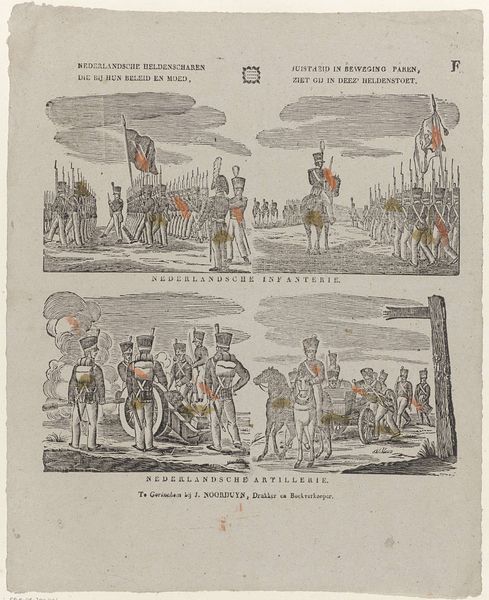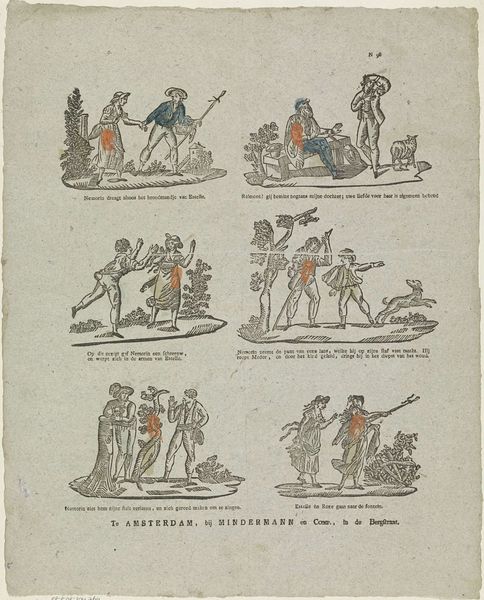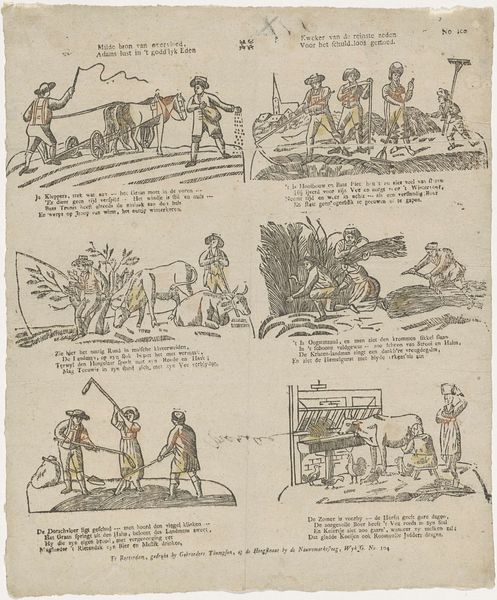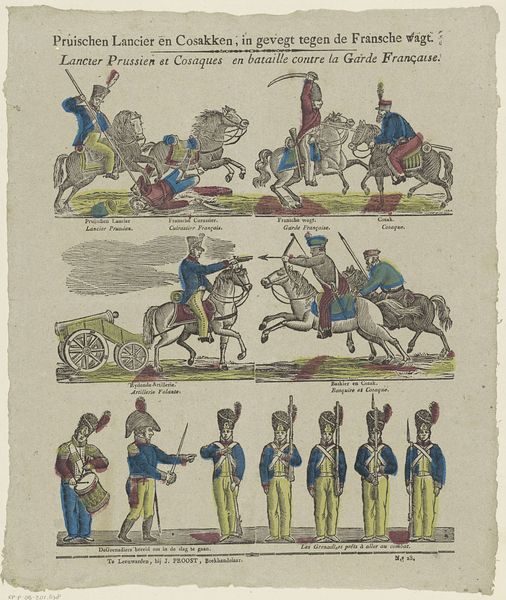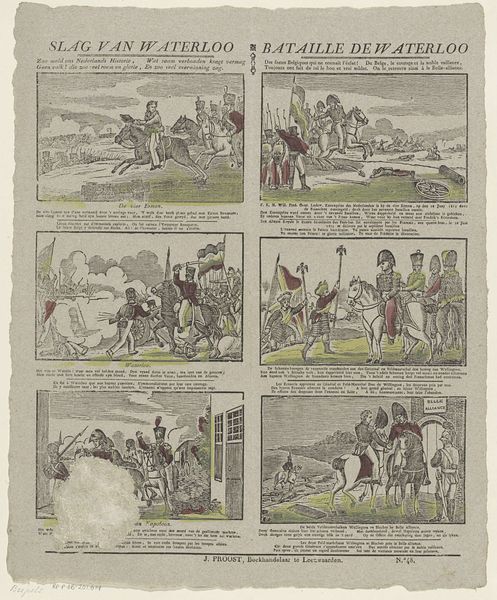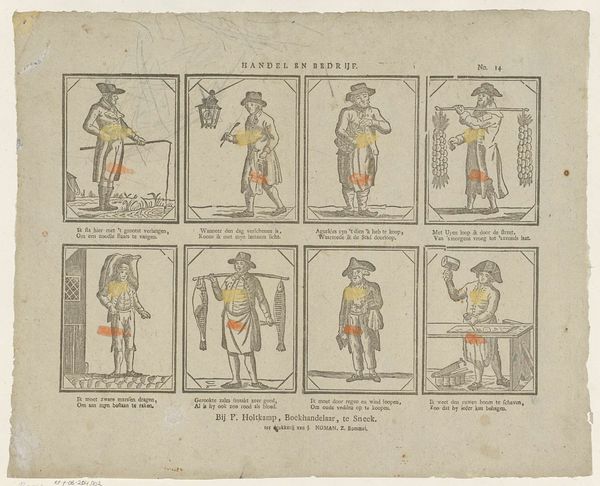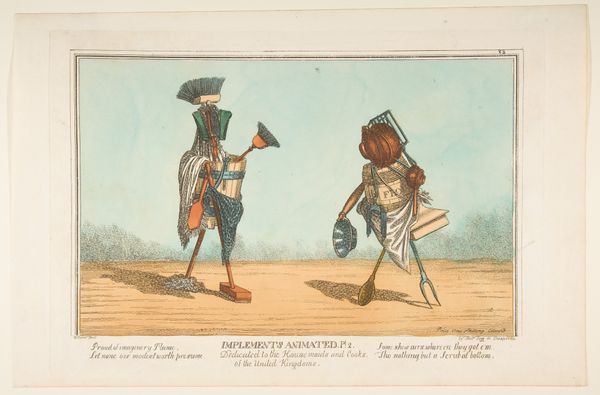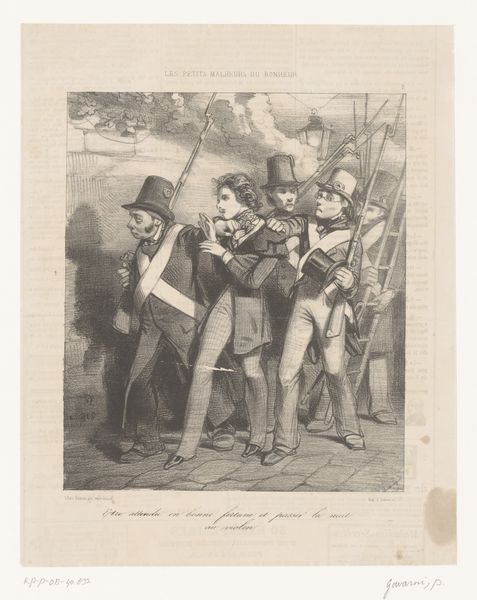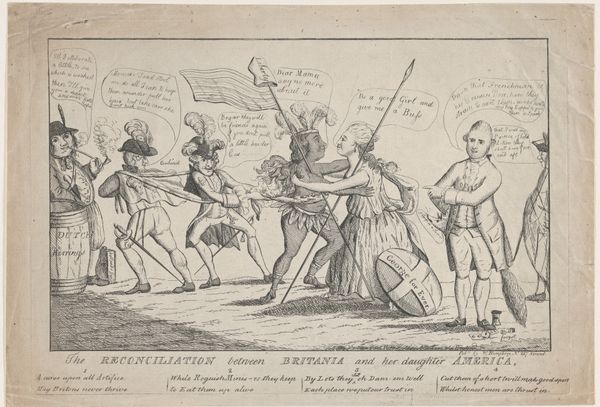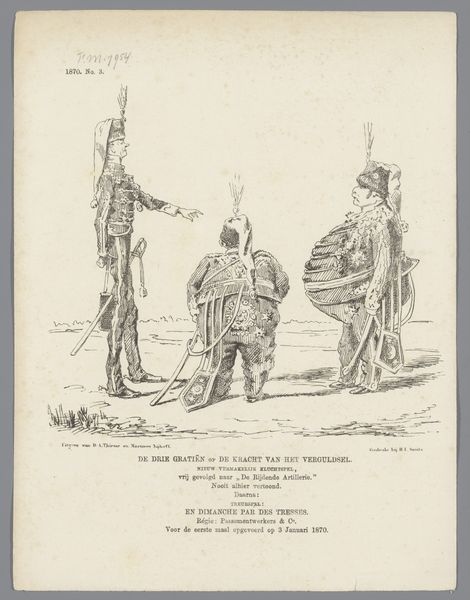
Kindren! ziet hier vier tafreelen uit den achtbren krijgsmans stand / Waar men dappre daden huldigt / de ondeugd overlaadt met schand 1831 - 1854
0:00
0:00
ervehrynders
Rijksmuseum
#
comic strip sketch
#
imaginative character sketch
#
quirky sketch
#
narrative-art
#
dutch-golden-age
# print
#
sketch book
#
personal sketchbook
#
idea generation sketch
#
sketchwork
#
comic
#
sketchbook drawing
#
genre-painting
#
storyboard and sketchbook work
#
sketchbook art
Dimensions: height 405 mm, width 335 mm
Copyright: Rijks Museum: Open Domain
Curator: This piece is entitled "Kindren! Ziet hier vier tafreelen uit den achtbren krijgsmans stand/ Waar men dappre daden huldigt/ de ondeugd overlaadt met schand," produced between 1831 and 1854 by Erve H. Rynders. It resides here at the Rijksmuseum. What's your initial take? Editor: It has an oddly charming, storybook quality. The print appears as a page torn from a sketchbook. Each scene offers a vignette, hinting at a larger narrative with a comic bent. There’s something disarming about its simplicity and the directness of the message, even without fully grasping the archaic Dutch. Curator: The imagery certainly carries a powerful cultural resonance. Consider how the recurring soldier figure is rendered—note his uniform and posture in each frame. While seemingly celebratory of military virtues ("dappre daden"), do you perceive a critical undercurrent directed towards “ondeugd”, or vice? Is the piece simply patriotic, or does it hint at a more complex socio-political commentary? Editor: I think it goes beyond simple patriotism. It feels very much of its time – likely responding to evolving public sentiment towards military service during a period of relative peace following the Napoleonic wars. The domestic scenes intertwined with soldierly activities indicate an attempt to normalize the role of the military within civilian life but also point out moments when their actions lead to what might be considered “shameful” outcomes, such as neglected children, perhaps. It seems the artist explores conflicting roles. Curator: Indeed. I read in the scenes allusions to cultural memory. How stories, like those within, propagate specific value systems—how visual narratives reinforce or subtly challenge dominant ideologies—impacting generational understanding. A cultural project that aims to integrate warfare through humor is really psychologically rich! Editor: The artist employs recognizable caricatures, common in the era's print culture, using the four panels as frames, and thus guiding audience reactions while subtly influencing ideas of Dutch identity and virtue and also playing the role of Dutch social engineer to its likely Dutch viewers. How was it first presented, and what was the initial reception for such a work? Did it incite broad engagement? Curator: Its integration within popular printed ephemera suggests a wider dispersal and thus accessibility than traditionally exhibited art – making it a particularly potent vehicle to explore issues pertaining directly back into quotidian lived experiences in Amsterdam then! Editor: Yes, this little Rijksmuseum treasure helps connect a seemingly far away Dutch past directly to broader debates about conflict, virtue, and even collective national responsibility today!
Comments
No comments
Be the first to comment and join the conversation on the ultimate creative platform.
